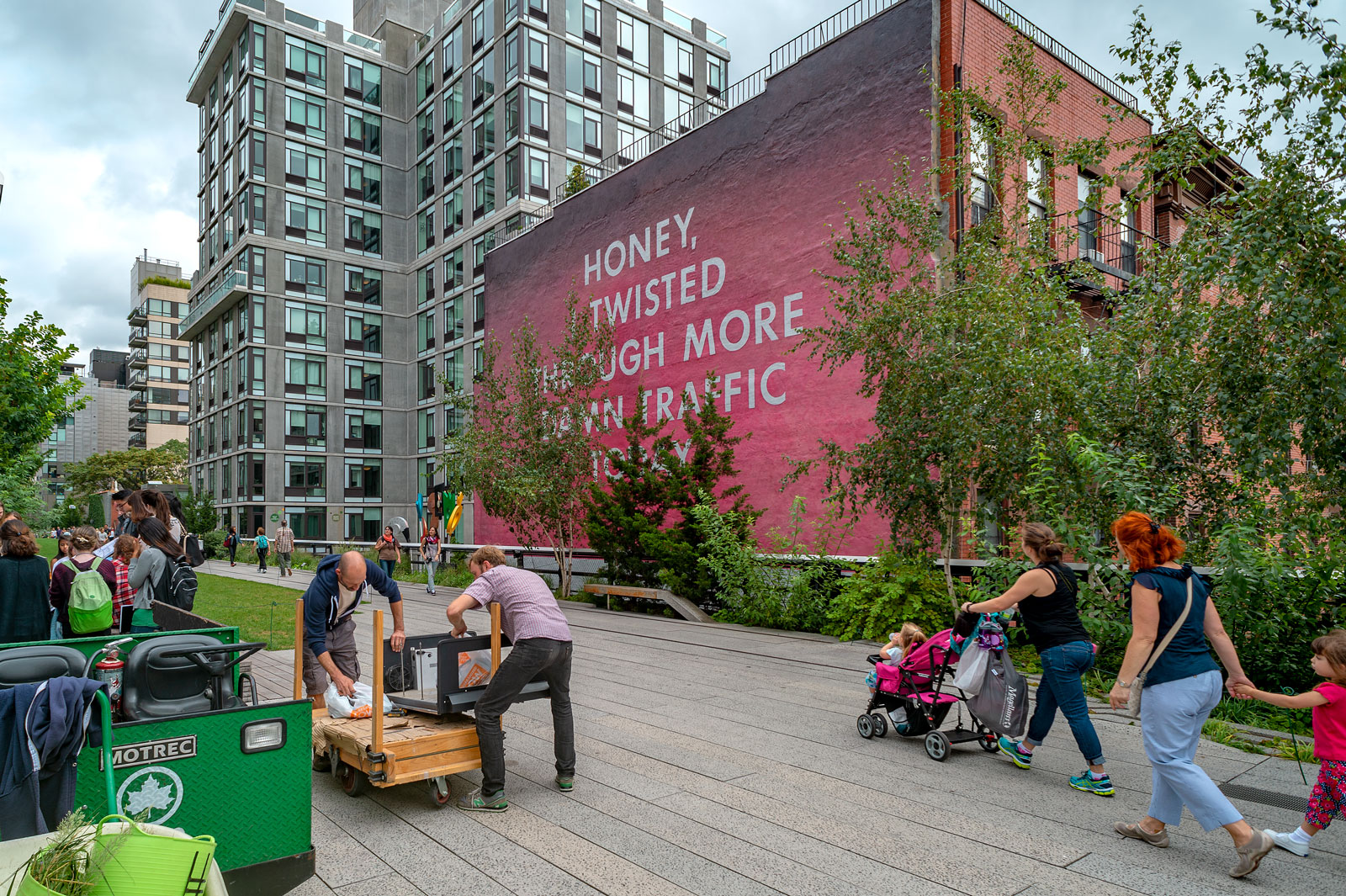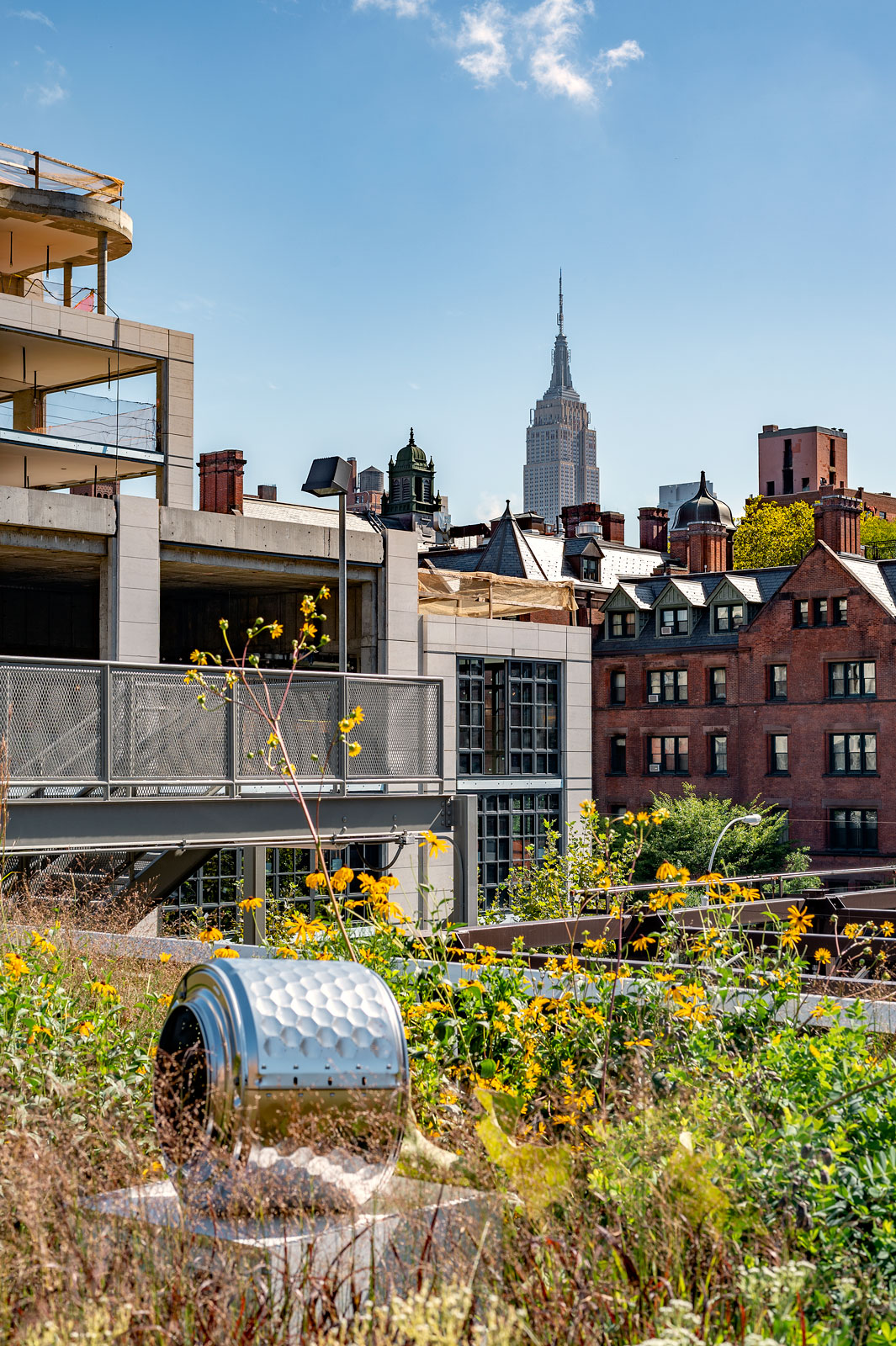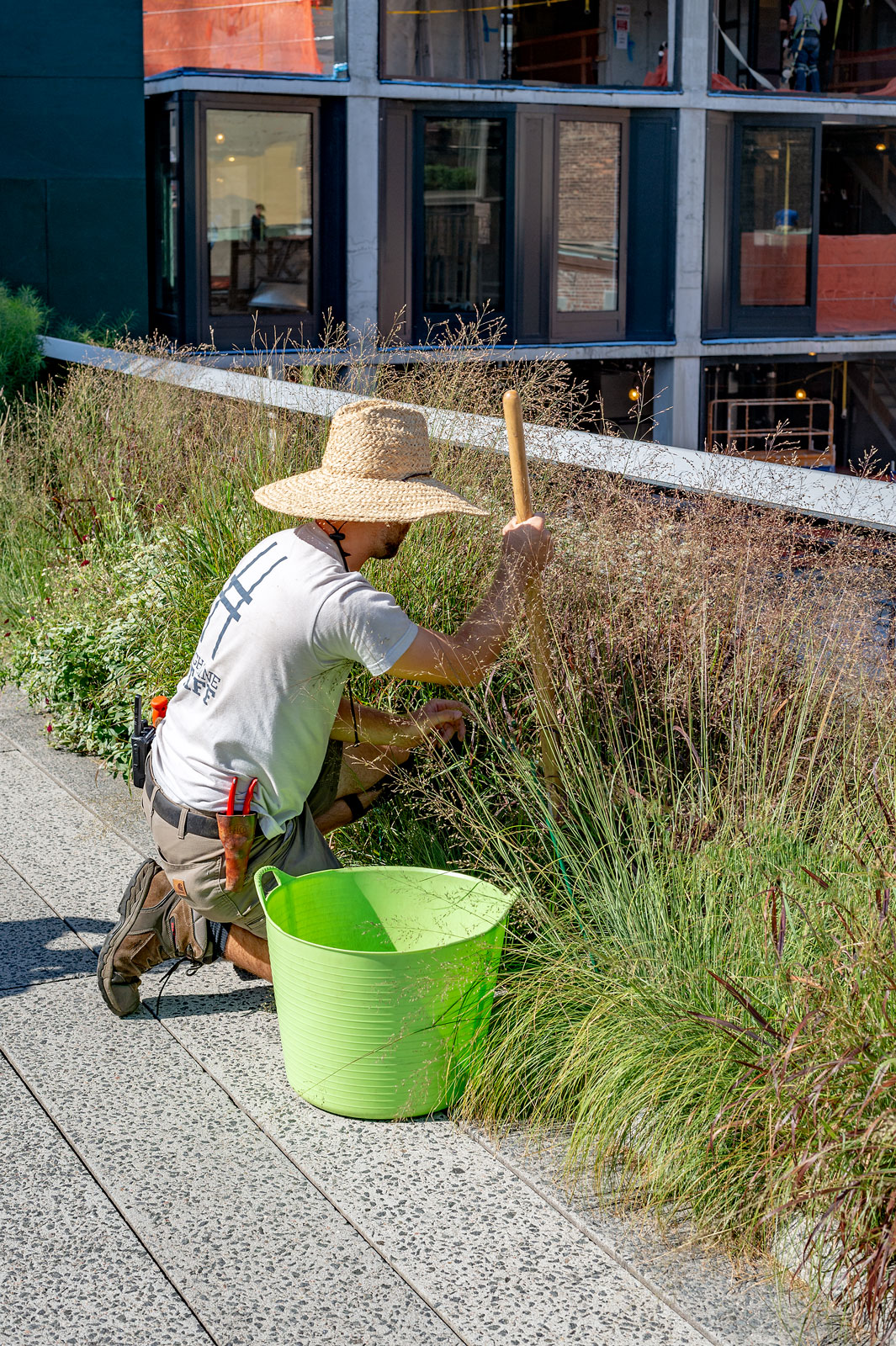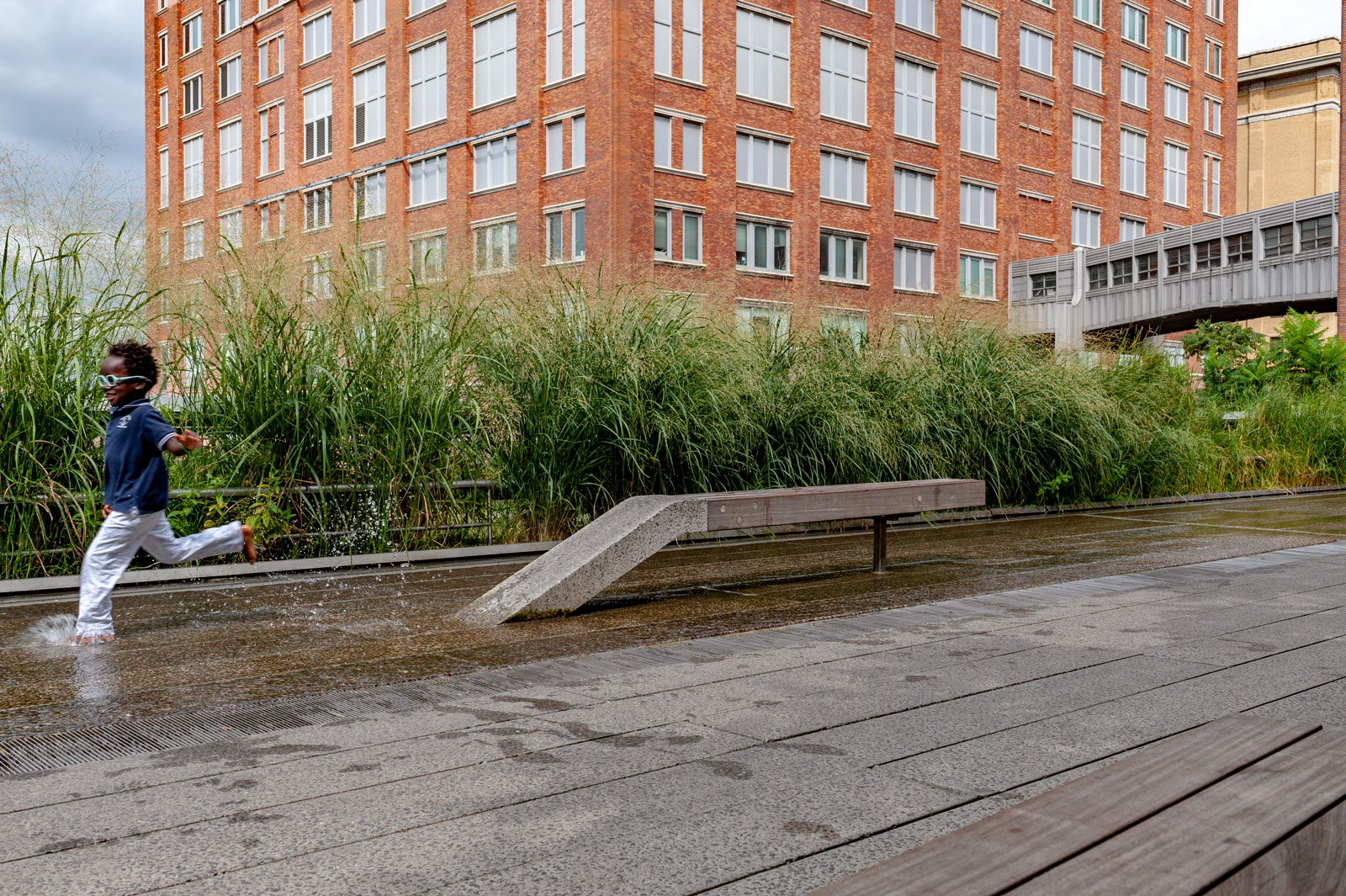It’s 10 am on the High Line in New York City, and two women in red cocktail dresses walk down the old railway turned greenway one after the other, each holding a book to her chest. Curator and director of the public art program for the High Line, Cecilia Alemani does not look surprised by the early morning action that could be an independent performance. “It happens all the time. This shows just how creative this neighborhood is,” she comments with laughing eyes, a good-humored countenance, and a perceptible vitality matching her flame-orange skirt that stands out against the dark gray New York sky. Away from the elitism and intellectual snobbery of the galleries, Cecilia attempts to bring museum quality work to her program in a fun and accessible way. To learn if she succeeds, she sits on the High Line’s benches and listens to people’s comments. “I hear the word art in so many languages and it is really refreshing.”
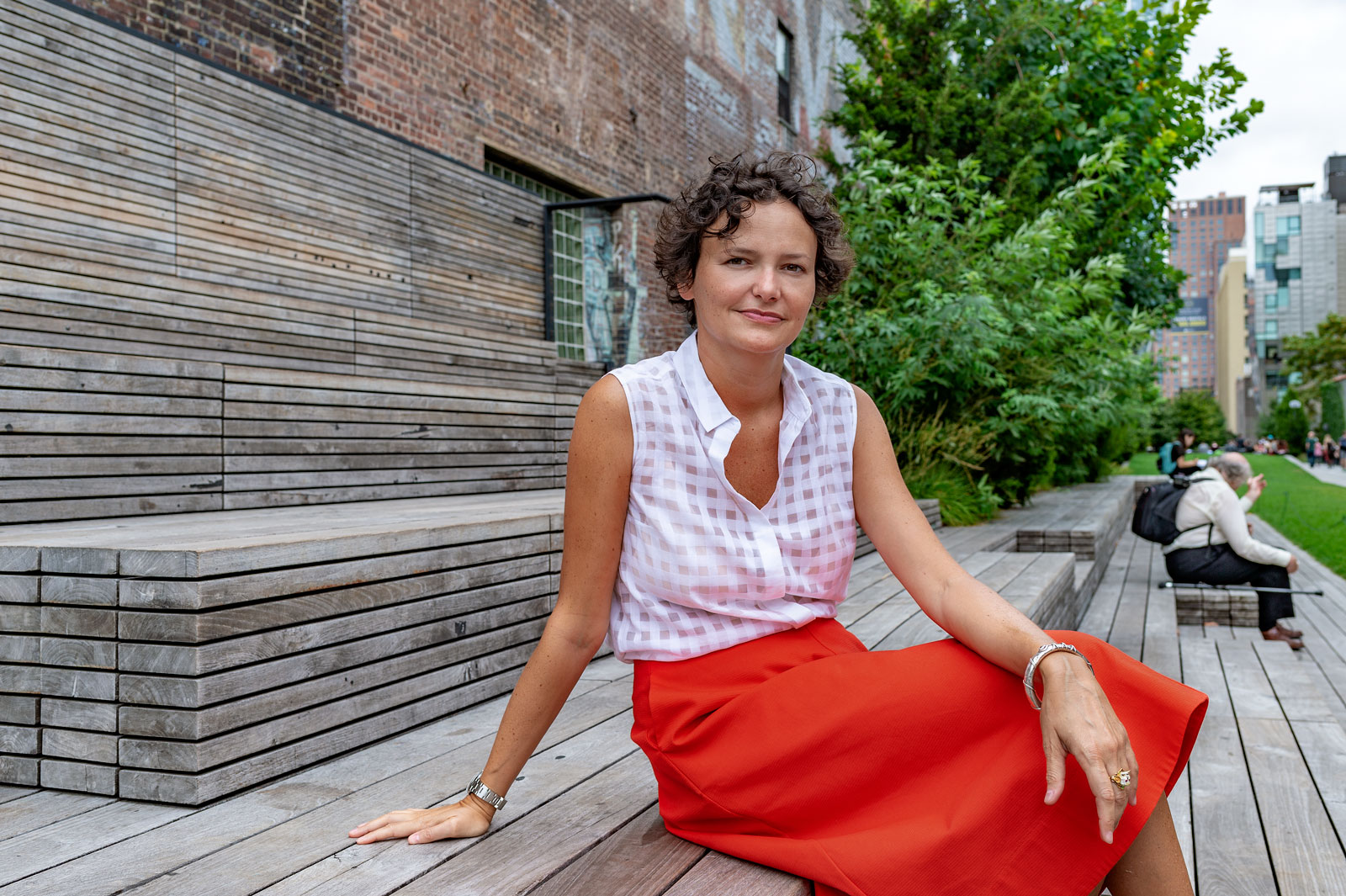
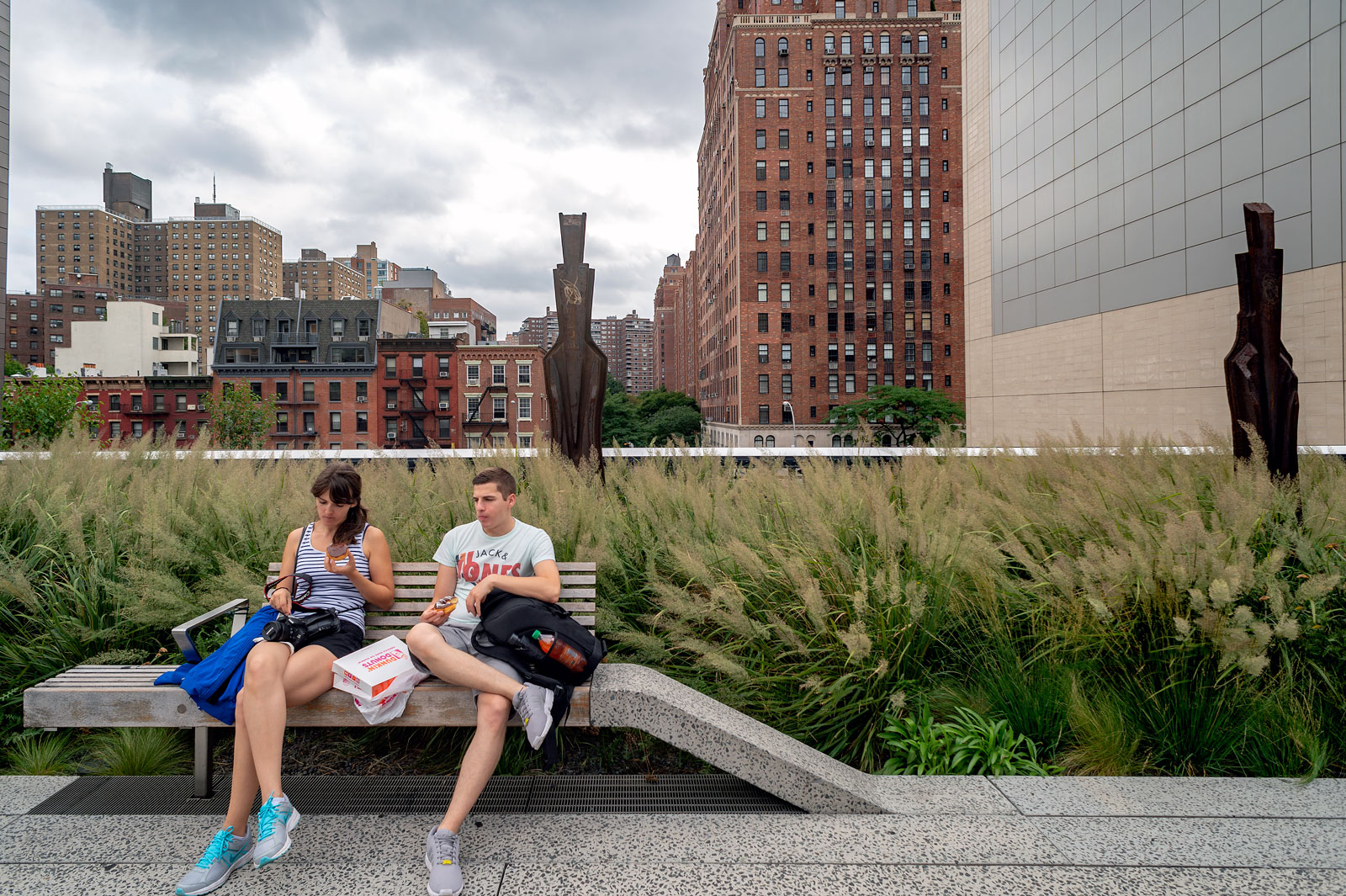

In a more prominent location stands the High Line billboard, a billboard on 10th avenue that at present has The Triangle(adjusted to fit), an abstract photograph by American conceptual artist Louise Lawler. The photograph belongs to a larger series that documents the “secret life” of modernist masterpieces in unconventional settings like storage rooms, auction houses, collector’s homes, or gallery spaces. The Triangle was shot in a room at Sotheby’s and depicts what looks like a foot and three artworks by Donald Judd, Frank Stella, and Sol LeWitt. Lawler manipulated the original dimensions of the picture to fit the size of the billboard, a technique that intentionally distorts the subjects. If the photograph had been intended for a gallery, it would have been stretched to cover all the walls of the gallery. “It was interesting to bring outside something that you would see inside in Chelsea,” comments Cecilia in her melodious, Italian-accented voice.
Honestly in New York City there is very little that you can do to provoke.
Cecilia Alemani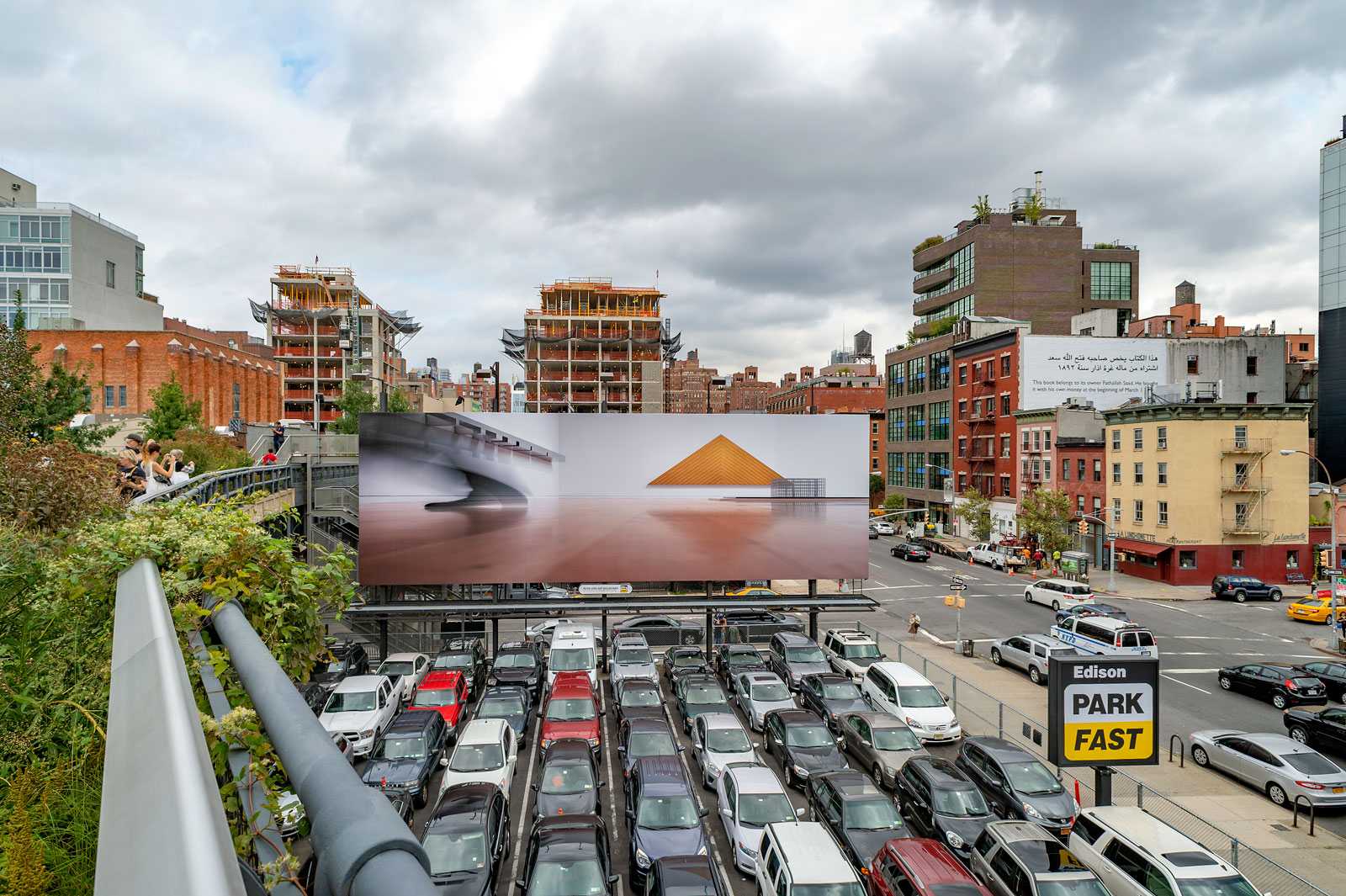
The billboard has displayed more bewildering examples hand picked by Cecilia such as Maurizio Catellan’s and Pierpaolo Ferarri’s image of red polished nails floating on blue velvet (2012) and Paola Pivi’s photograph of two zebras on a snowy mountaintop. While these stood merely as surreal backdrops to the busy city life, others are more lyrical like David Shrigley’s text painting of a rather confessional statement scribbled in a speech bubble and very much in tune with the anxieties of our contemporary society, or Allen Ruppersberg’s You & Me, a series of posters containing combinations of the words “You” and “Me” to evoke the complexities of personal relationships. The most unusual billboard adaptation so far has been Faith Ringgold’s quilt. ‘’That proved a delightful surprise,” but Cecilia’s favorite “is John Baldessari’s because it was my first curatorial assignment and everyone thought it would create waves, but nothing really happened.” The billboard, The First $100,000 I Ever Made, had a giant version of a $100,000 bill, the highest denomination the American government ever printed. “A commentary on the financial situation or a giant object of desire?” she muses.
Cecilia’s main objective when scouting for art for the High Line is “for the artwork to carry the potential to create an interesting encounter and generate a space for discussion, especially for people who are on the go.” The High Line has a particular accidental charm because “it is an itinerary park. Everyone is walking and you want to keep going and as you walk, you bump into art.” Is controversy ever an issue? As her eyes rove meditatively over the crowd, she turns and says, “Honestly in New York City there is very little that you can do to provoke. People are just so used to seeing very creative ideas. Look at this man’s moustache, for example.’’ A man with a flamboyant Dali-esque moustache walks on by. ‘’Nobody finds it odd here. Same thing happens with the art.”

Although not a native New Yorker, Cecilia has made New York her home and keeps busy with High Line and Frieze Projects which she will curate for the 4th time this coming year. “Frieze Projects takes place in a similar setting, a very public park on Randall’s Island. But it is the opposite extreme in terms of the people. On the High Line only a small percentage is art people, as opposed to Frieze where it’s mostly art people.” She moved to New York in 2003 to complete a postgraduate degree in curatorial studies at Bard College and has stayed ever since. “I felt immediately welcome. Nobody judges you and everybody loves you here.” She discovered a sense of belonging that had eluded her in cities where she had lived before coming to New York. “Public art was not really my vocation, but coming to New York I started breathing public art much more.” Now a public art connoisseur, she and her husband Massimiliano Gioni, artistic director at the New Museum and at the Fondazione Nicola Trussardi, share an apartment in the East Village. The art power couple has no art in the house; “we have art in boxes and besides I look at art all day, so when I return home, I love staring at a white wall.”
As the wind picks up and disrupts our conversation, her dark forelock falls across her forehead. “All our projects need to be vetted by an engineer to make sure they can sustain hurricane winds. When I started, I thought it was so silly. But then hurricane Sandy came.” At the time they had commissioned Ghanaian sculptor El Anatsui to install Broken Bridge II, a camouflage wall made of recycled pressed tin and mirrors woven together in a beautiful surface that reflected the city and the landscape around. The storm hit the third week of installation, but the piece stood up. There was no damage except for not having electricity for three weeks, which was “a bit of a challenge.” Despite the prospect of storms, Cecilia has grown more and more enamored of public art and more and more interested in the challenges that come with it. With a smile of reassurance she says, “The weather pushes you to do something new and that’s the beauty of public art.”
New York, 2014. All photographs and text © 2014 by Alexia Antsakli Vardinoyanni – www.artflyer.net
